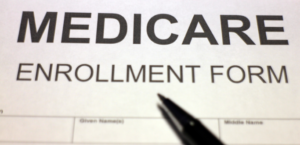There are multiple ways to qualify for Medicare, and qualifying may be easier than you think. Let’s examine the qualifications to understand your Medicare eligibility.
Qualifying for Original Medicare
The most common qualifier for Medicare is age: depending on your work history, most people qualify for Medicare when they turn 65. There are, however, a few other possible qualifications for eligibility. You may also qualify if you:
- Be a U.S. Citizen and 65 or Older
- Have End-Stage Renal Disease (ESRD)
- Have Lou Gehrig’s Disease
- Are Receiving/Can Receive Social Security or Railroad Retirement Benefits
- Are a Government Employee (either you or your spouse)
- Are Under 65 and Have Received Certain Disability Benefits from the RRB for at Least 24 Months
- Are Under 65 and Have Received Disability Benefits from Social Security for 24 Months or More
If you meet any of these qualifications, you are eligible for Original Medicare (Parts A and B), Medicare Advantage, Medicare Supplements, and/or Part D for additional coverage. Qualifying under 65 can be a bit tricky, so if you have additional questions about it, call Medicare on Video at 877-88KEITH (53584), or email Keith@MedicareOnVideo.com.
If you are 65 or older and also working, you are still eligible for Medicare. Your employer coverage can be combined with Medicare to provide plenty of benefits.
If you are eligible for Medicaid, you may also qualify for combined coverage with Medicare. Medicaid is a federal program geared towards those in financial need. If you have met any of these above qualifications and meet the following, you may be eligible for a Dual Eligible Special Needs Plan (D-SNP):
- You receive Full Medicaid benefits
- You are a Qualified Medicare Beneficiary (QMB) without other Medicaid (QMB Only)
- You receive QMB Plus
- You are a Specified Low-Income Medicare Beneficiary (SLMB) without other Medicaid (SLMB Only)
- You receive SLMB Plus
- You are a Qualifying Individual (QI)
- You are a Qualified Disabled and Working Individual (QDWI)
These are a lot of new and likely confusing terms. If you need help understanding Medicaid and dual-eligibility, give us a call or email and we will guide you through the enrollment process at absolutely no cost to you.
Qualifying for Premium-Free Medicare Part A
If you qualify for Original Medicare, you may also qualify for premium-free Medicare Part A. A premium is a monthly fee that Medicare beneficiaries must pay for coverage. Generally, you qualify for this plan if you or your spouse have worked at least 40 calendar quarters of work in any job where you paid Social Security taxes in the U.S.
40 calendar quarters of paying Social Security taxes means that you will need to have been working for at least 10 years paying these taxes. Nearly all Americans are required to pay Social Security taxes. More often than not (unless you are/were self-employed), this fee will come directly out of your paycheck while employed. So, more than likely, you qualify for premium-free Part A.
Medicare Enrollment Periods
There are four Medicare Medicare enrollment periods—initial, special, general, and open enrollment. The 3 months before your 65th birthday begin what is referred to as your Medicare Initial Enrollment Period (IEP). This is one of the most typical and easiest opportunities to enroll. Within this period, you may apply for Original Medicare (Parts A and B), a supplement plan, a Part D prescription drug plan, or a Medicare Advantage plan without any late penalties.
The 3 months before your 65th birthday begin what is referred to as your Medicare Initial Enrollment Period (IEP). This is one of the most typical and easiest opportunities to enroll. Within this period, you may apply for Original Medicare (Parts A and B), a supplement plan, a Part D prescription drug plan, or a Medicare Advantage plan without any late penalties.
The General Enrollment Period (GEP) takes place from January 1st through March 31st. During this period, you may:
- Switch from Original Medicare to a Medicare Advantage Plan
- Switch from Medicare Advantage to Original Medicare
- Switch from an Advantage plan without Prescription Drug Coverage to One with It
- Switch from a Plan with Prescription Drug coverage to one without
- Join or Drop a Part D Prescription Drug Plan
- Switch to a New Insurer
The Special Enrollment Period (SEP) is an opportunity for those eligible to apply for Medicare under specific circumstances. If you fall under one of these specifications, you may apply for any plan at any point, regardless of the other enrollment periods. You can apply with a SEP if:
- Your plan makes changes to your coverage.
- You become eligible for Medicaid.
- Enrolled or lost a State Pharmaceutical Assistance Program (SPAP).
- You need to be enrolled or are enrolled in a Special Needs Plan (SNP).
- An error occurred on behalf of your plan provider and/or a federal employee.
- You moved out of your plan’s service area.
- You or your spouse are currently working.
- You must make the necessary changes to your current plan.
Open Enrollment offers Medicare beneficiaries the opportunity to change their current coverage and occurs from October 15th through December 7th. You may leave your current plan or plan provider—you may not, however, add a new coverage plan such as Part D or a supplement plan. Any of these periods are a possible time to enroll, but the best time to enroll is always when you are first eligible at age 65 during your Initial Enrollment Period (IEP). This way, you can ensure that late fees are not tacked onto your monthly premiums. If you wait to apply for a plan past your IEP and do not qualify for a SEP, a small amount will be added to your premium for every month you do wait to apply.
For All of Your Questions About Enrolling in Medicare, Contact Medicare on Video
Enrolling in Medicare can seem tricky, but it doesn’t have to be. This is a great introduction, and now it is up to you to take the first step. If you need help getting started or have any questions, we’re here for you—give us a call at 877-88KEITH (53584), or email us at Keith@MedicareOnVideo.com.
















